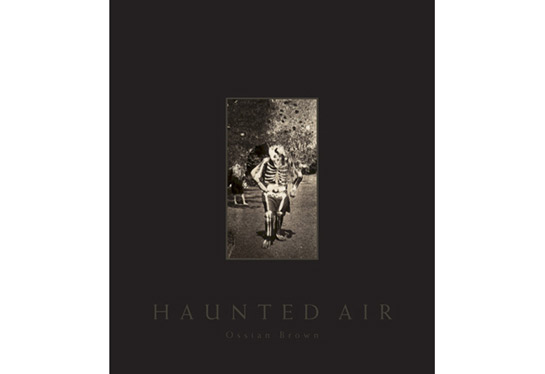Review: Haunted Air by Ossian Brown

“The roots of Hallowe’en,” the historical note at the end of Haunted Air informs us, “lie in the ancient pre-Christian Celtic festival of Samhain, or ‘Summer’s End’, a feast to mark the gathering of the harvest, the death of the old year and the birth of the new. Ancestors were remembered, cattle, sheep and pigs were slaughtered and the carcasses burned on huge hillside bonfires (‘bone fires’) in rites of purification and appeasement.” That sounds like a jolly good time, but there was more: “It was believed that on this night the veil separating the worlds of the living and the dead grew thin and ruptured, allowing spirits to pass through and walk unseen but not unheard amongst men. […] Spells of binding and protection were chanted, grotesque skull-faces were carved into turnips, lit with embers or candles and hung from trees or nailed over doorways to ward off malicious revenants.” (more)
There it - almost - is, our Halloween. Needless to say, there were some changes - Christianity required some fixes; out with the turnips, in with the pumpkins; and let’s have some candy - but the roots of Samhain are clearly visible in Halloween, more visible, in fact, than the pagan roots of the über-Christian Christmas. Ironically, the pagan belief that children were in the danger of getting abducted during Samhain made it safely all the way into Suburban American suburbs during Halloween.
I didn’t grow up with Halloween. There was no Halloween in Germany. Instead of dressing up and walking around in costume to beg for candy in late October German kids did - and probably still do - the same usually in February as part of the “Karneval” celebrations - which are equally steeped in pagan traditions, albeit celebrating the end of Winter. Christianity later added another component to it, making it basically the only time of the year where you could do whatever you want, including taking a little break from your marriage for a night (the latter part is usually not talked about in public). So the candy-and-costume bit I was familiar with, the whole pumpkin carving and ghost thing not so much.
In Haunted Air, things get a lot more fun, since the book shows a large collection of vintage (“c. 1875-1955”) vernacular photographs owned by Ossian Brown. Many (most?) of the costumes look home-made, and I would imagine that’s closer to what Halloween looked like before consumerism took over this day, too. The book essentially is an album of these photographs, with the images just very slightly varnished (or maybe it’s just the ink on the paper) so it almost looks as if you’re looking at the actual objects.
I’m a bit of a sucker for vernacular photography if it’s well presented (that’s a bigger “if” than it might seem). This collection obviously is, and the variety of images is pretty amazing. My favourite is what looks like a tintype (there are some spots that look like the emulsion has come off, and the colour of the image looks like the colour of the vintage tintypes I own), with a dog lying in front of six kids, three are dressed up as animals, three others as I don’t even know what. Other images feature very simple outfits, often amazingly creepy (possibly for reasons other than what people might have thought back then). So for all those interested in vernacular photography, here’s a book not to miss!
Haunted Air, vernacular photographs from the collection of Ossian Brown, essays/introduction by Geoff Cox and David Lynch, 216 pages, Jonathan Cape, 2011